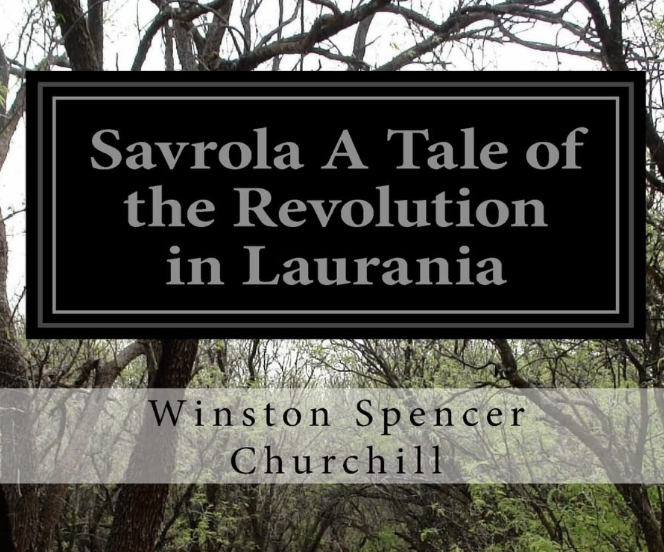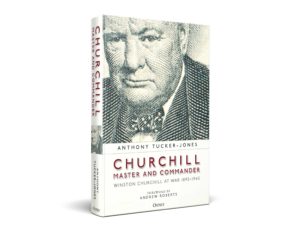Book Reviews
Review of Churchill’s “Savrola”

October 17, 2008
Longmans, Green & Co., New York (First Edition), London & Bombay, 1900
First published in Churchill By His Contemporaries in 1953 and reprinted in Finest Hour 38, Winter 1982-83
When Churchill found time to write a novel of some 70,000 words between The Story of the Malakand Field Force and The River War, which would be a surprising statement about almost anybody except Churchill, he was in his 24th year. Savrola offers an opportunity to pry into the dreams of a young man of destiny, not merely about his own political future but also that of dictators.
The scene is a Mediterranean republic where President Antonio Molara is ruling the country in a manner reminiscent of the Metaxas dictatorship in Greece. However, under the leadership of Savrola, a well-bred young Democrat, the National Party is on the up and up. In the inevitable confrontation, Molara enlists his beautiful wife Lucile to compromise Savrola. But Lucile falls in love with the hero, saves his life in a confrontation with a by-now doubly enraged President, and Savrola rallies the forces who overthrow the tyrant. Savrola himself is set upon by a “Secret Society” (thinly disguised Socialists) led by the demonic Kreutz, a sort of prototype Trotsky. Savrola and Lucile escape into exile, Churchill says they eventually return, but no further account of their later adventures, or indeed any other nonfiction books, emerge from his pen.

2025 International Churchill Conference
To the contemporary critic, Savrola would have seemed merely one more Ruritanian romance that The Prisoner of Zenda had made so popular from 1894. For us, Savrola is a significant revelation of WSC in his mid-20s. It is the day-dream of a man of action, and if some accident or illness had deprived the author of the opportunity to remain a man of action that author might have written many more romances and left an eminent name as a romancer. As destiny ruled he remained hale and vigorous and there was neither leisure to dream in romances nor the urge of frustration to inspire him with stories of what he desired from life but could not attain through disability. It would be idle flattery to claim more for Savrola than its author would claim for it, and the fact that he allowed it to remain out of print from 1915 until 1956 when the Second American Edition was published by Random House; [this edition is the most affordable –Ed.] suggests that he regarded it as a facet of his brilliant youth outshone by others.
Still, Savrola deserves to be reprinted again, so many coming events cast in its pages their shadows before. Not all the artificiality of Ruritanian romance can deprive this book of authentic vitality when it is read with the knowledge of what one day its author would become. The dreams of a great man are perdurable.
Subscribe
WANT MORE?
Get the Churchill Bulletin delivered to your inbox once a month.






